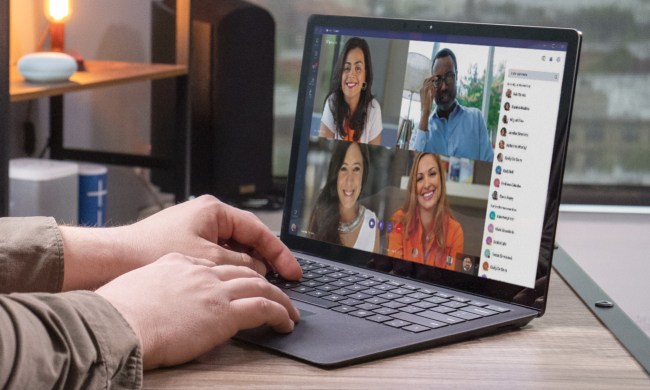
If you’ve never purchased bitcoin before or don’t know what this whole cryptocurrency lark is all about, we’d recommend you do a bit more reading before diving in to trading some of the less well-known alt-coins. But for those of you who have already purchased nice stack of bitcoin and would rather diversify than invest more, here’s how to trade bitcoin for something else.
What currencies should you trade for?
At the close of 2017, there are hundreds upon hundreds of cryptocurrencies vying to become as popular and as valuable as bitcoin, which can make it a little difficult to know what’s what and what you should be trading your bitcoin for. We wouldn’t presume to know the future of which cryptocurrencies will become super valuable and which will fall, especially since they all could go either way and many are dependent on bitcoin in that respect. However, these are some that are perhaps worth considering more than others.

Litecoin – One of the older bitcoin alternatives, created back in 2011, Litecoin has seen enormous growth in 2017 off the back of bitcoin’s own explosive value spike. It’s increased in value close to 100 times throughout the year, making it one of the top 10 most valuable cryptocurrencies and top five in terms of market cap.
Ethereum – With a market cap second only to bitcoin itself, Ethereum is an exciting, modern cryptocurrency which bundles in features like smart contracts, giving it real potential as a future transactional medium. It’s also seen huge growth as of late, making it a very viable alternative to bitcoin.
Bitcoin cash – Although some of the experts we’ve spoken to don’t speak too highly of this bitcoin fork, bitcoin cash is, at the time of writing, the second most valuable cryptocurrency in the world. It has proven extremely volatile, however, jumping tens of percent in days. Be wary of putting too much into this one. Consider it a more high-risk investment than even its brethren currencies.
Dash – Another older cryptocurrency formerly known as Darkcoin, Dash is built on the same framework as bitcoin, but fixes some its glaring issues. It’s a top five cryptocurrency in terms of value, but lacks some of the name recognition of the above contemporaries.
Other currencies potentially worth considering are Monero, ZCash, and Ripple, but as with all cryptocurrency investments, do your research first and be aware that very few represent a stable investment.
For a look at how all of these currencies are trading at any one time, live trackers like LiveCoinWatch and CryptoCompare can keep you abreast of the situation.
Using an exchange
The most automated and hands-off method for trading bitcoin for another cryptocurrency is through an established exchange. There are many exchanges out there and not all of them will tick all of the boxes you’re looking for. Some may not offer trades for the cryptocurrency you are interested in, or provide wallets for that particular currency. For a look at all of the many options available to you, Bitcoin.com has a regularly updated list of the best ones available.
That said, here are a couple of popular options and the steps you need to take to trade currencies on them.
Coinbase/GDAX

One of the longest-running and most respected exchange platforms, Coinbase (its trading platform, GDAX), lets you conduct trades between bitcoin, Litecoin, and Ethereum, so you have some choice in what you trade.
Since you’ll want an attached wallet, signing up with Coinbase first is a good place to start. Don’t forget to verify your identity and complete the account setup process so that you have full access to all of Coinbase’s features.
Once complete, head to GDAX and login using your Coinbase information. You may be asked to verify again, but once that’s complete, you’re in. Transfer the bitcoin you wish to trade to your GDAX account and once confirmed, you’re ready to trade.
The main trading page features live trackers for the major currencies traded on the site. It’s a little confusing, but never fear, the actual trading itself is easy enough to get your head around. To choose what you’re trading and what for, click the slashed “Select Product” button in the top left. Select either ETH/BTC or LTC/BTC to make the trade for Ether or Litecoin, for bitcoin, respectively.
Next, you need to choose whether you make a standard “market” order at best market price; a “limit” order, which only makes a trade at a specific value or better, or a “stop” order, which will initiate a market order once a certain value has been reached.
When you are happy with your choice, click the green “Place Buy Order” button and await the trade. It is unlikely to be instantaneous, but it should be complete within a 24 hour period, especially if you are buying at market value.
There are a few more advanced features that you can play with if you want, but they go beyond the scope of this introductory guide.
ShapeShift

ShapeShift technically operates as an exchange, though it fits more of a middle ground between something like Coinbase and the more direct trade platforms. That makes it somewhat the best of both worlds, as it’s fast and convenient, but not quite as hands-on as peer to peer trading. It’s also much more private than both, as it needs no accounts or verification and supports far more currencies than Coinbase.
The important point to note with ShapeShift though, is that it does not deal in fiat currencies like USD. That means you will need to go somewhere else to buy or sell cryptocurrencies, but it makes it perfect for trading one cryptocurrency for another.
Note: ShapeShift does not currently operate in New York or North Korea.
To get started with ShapeShift, all you have to do is head to the home page and select the currencies you’re trading to and from — in this instance, pick bitcoin and whatever you want to trade it for. Choose “Quick” for your first time out, though you can play with the “Precise” trades when you’re more accustomed to the service.
On the next page, input your “destination address” for your new currency’s wallet (make sure it’s compatible with what you want to receive) and a refund address, should the trade fail for whatever reason. Check the “Miner fee” in the bottom right, to make sure you are happy with the transaction cost, then agree to terms and hit the big “Start transaction” button.
The next screen will give you a wallet address to deposit your bitcoin into. Do that and once it’s confirmed, you will receive your new cryptocurrency in its respective account.
Although transactions are typically fast on ShapeShift, it, like other exchanges methods, is susceptible to market traffic, so may take longer to make the trade at busier times.
Direct trades
Much like when it comes to selling your bitcoin or other cryptocurrencies, if you would rather take a more direct role in the sale process, direct trades or peer to peer transfers are preferable. They do require you to be on-hand to make the transaction yourself, but you have a much firmer grasp of the price being negotiated and the eventual time and point of sale.
Since direct trades have a set price and you deal directly with your fellow trader, the process is slower and arguably more susceptible to fluctuations in value. That can mean you get a better deal, but it might not. It will be on you to check prices and cryptocurrency values at the point of trade to make sure you’re getting the best deal for you.
Paxful

Although Paxful can be used to trade bitcoins for cash, gift cards, and bank transferred funds, it can also trade one cryptocurrency for another. It supports Litecoin, Dash, Ethereum, and more — check the full list to see if the coins you want are supported. To make the trade, you can look for existing buy/sell orders by selecting your currency of choice and chosen payment method and selecting an appropriate trade, or make your own.
You’ll need an account to continue from there, but once setup and logged in, you can enter into a direct chat with your respective buyer/seller to complete the transaction. All cryptocurrencies are held in escrow so everyone walks away happy from a trade and it can be completed safely.
For those a little uncertain about the process, Paxful offers its own support system to help you if you run into any problems.
LocalBitcoins

LocalBitcoins is primarily aimed at buying and selling bitcoin, but it does also support Ethereum at the time of writing. It is even more hands-off than Paxful, so be aware that you will be responsible for the whole process, from providing a valid wallet address and completing your end of the deal in a timely manner.
To conduct a trade on there, you’ll need to select “Quick Sell” at the top of the page, input the amount you’re looking to trade and where you’re located and then select “Ethereum Altcoin” from the dropdown of available offers.
You may not find any listings at the time of searching, in which case using an alternative platform or waiting will be your best bet. However, in the case that you do find someone willing to make the trade, pick the one that offers you the best return on your bitcoin and hit the “Sell” button on the right-hand side.
Sign up for an account if you haven’t already and input your trade offer to the buyer. You can then enter a discussion to hash out a deal. Once you’ve made it, await the transfer of Ethereum from your trade partner and when received, send them the bitcoin in return.



